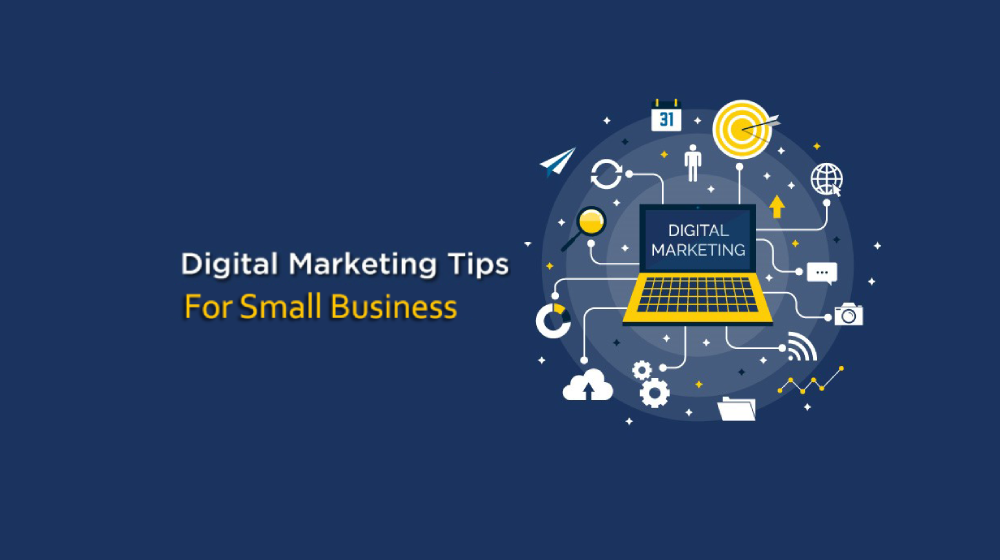
10 Simple Yet Powerful Digital Marketing Tips
In the dynamic world of online marketing, having a clear and effective strategy is essential for success. 10 Simple Yet Powerful Digital Marketing Tips is your ultimate guide to boosting your online presence, reaching a broader audience, and driving conversions. Whether you’re aiming to enhance your SEO strategy, leverage social media more effectively, or refine your email marketing efforts, these digital marketing tips provide actionable insights that can be easily implemented by businesses of any size.
By incorporating these simple yet impactful strategies into your marketing plan, you’ll be able to navigate the ever-evolving digital landscape with confidence and achieve measurable results. Let’s dive into the top 10 digital marketing tips that can transform your approach and help you stay ahead of the competition.
1. Establish one or two SMART marketing goals for the year
2. Monitor the Right Marketing KPIs to Achieve Your Objectives
3. Develop a Clear Positioning Statement for Your Business
4.Create a Google Business Profile
5. Focus on Low-Competition Topics
6. Build a Following on One Social Network
When deciding where to focus your social media efforts, it’s tempting to jump on every new platform or spread yourself thin across multiple channels. However, the key to effective social media marketing is to concentrate your efforts on a single platform.
Don’t be swayed by the latest social media trends or the urge to be everywhere at once. Excelling on one platform requires creating content that resonates with its specific audience, and doing so takes time, effort, and resources. Even if you repurpose content, managing multiple platforms effectively can be overwhelming, especially if you’re a solo entrepreneur.
The choice of platform should align with your marketing objectives and where your target audience is most active. For instance, if Twitter is where your audience engages the most and helps you meet your goals, focus your energy there.
Once you’ve established a solid following and honed your strategy on one platform, you can consider expanding to additional social media channels. For example, despite Instagram being established since 2010, we’ve only recently launched our Instagram account after mastering other platforms.
In summary, start by building a strong presence on one social network. This focused approach will maximize your impact and set a solid foundation for future growth.
7. Build a Solid Email List
8. The Importance of SEO for Improving Your Business
Search Engine Optimization (SEO) is crucial for enhancing your business’s online presence. By optimizing your website for search engines, you increase your visibility, making it easier for potential customers to find you when they search for relevant keywords.
Effective SEO drives organic traffic to your site, reduces the need for paid advertising, and improves user experience by making your website more navigable and faster. Moreover, high search engine rankings build credibility and trust with your audience.
Incorporating SEO strategies can lead to increased brand awareness, higher conversion rates, and long-term business growth. Investing in SEO is not just about ranking higher—it’s about connecting with your target audience and standing out in a competitive digital landscape.
9.Run Ads on Less Popular Platforms
While major platforms like Facebook and Google dominate online advertising, exploring less popular platforms can offer unique advantages. Advertising on these platforms often comes with lower competition and cost, allowing you to reach niche audiences more affordably.
By targeting ads on emerging or specialized platforms, you can tap into untapped markets and engage with users who may be overlooked on mainstream channels. This strategy can lead to better engagement rates and higher returns on investment.
Consider experimenting with platforms like Reddit, Quora, or niche industry websites. These less conventional options can provide valuable opportunities to reach specific demographics and stand out from the crowd.
10.Seek Customer Feedback:
Gathering and utilizing customer feedback is essential for refining your business and ensuring you’re meeting your customers’ needs. Here’s how you can effectively seek and use feedback:
- Create Feedback Channels: Offer various ways for customers to provide feedback, such as surveys, feedback forms, suggestion boxes, and direct interviews. Make it easy for them to share their thoughts.
- Ask the Right Questions: Design your surveys and feedback forms to elicit useful information. Focus on questions that uncover pain points, areas for improvement, and customer satisfaction.
- Use Multiple Methods: Combine quantitative methods (like rating scales) with qualitative ones (like open-ended questions) to get a comprehensive understanding of customer experiences.
- Actively Monitor Social Media: Keep an eye on social media platforms for comments and reviews about your business. Engaging with customers on these platforms can provide real-time insights and show that you value their opinions.
- Implement a Net Promoter Score (NPS): Use NPS surveys to gauge customer loyalty and likelihood of recommending your business to others. This metric can help you assess overall satisfaction and identify promoters and detractors.
- Analyze and Prioritize Feedback: Review the feedback you collect and identify common themes or recurring issues. Prioritize the areas that will have the most significant impact on customer satisfaction and business performance.
- Take Action: Use the insights gained from feedback to make informed improvements to your products, services, or processes. Demonstrating that you act on feedback builds trust and shows customers that their opinions matter.
- Follow Up with Customers: Let customers know that their feedback has led to tangible changes. This follow-up can be done through email updates, social media posts, or personal responses.
- Foster a Feedback Culture: Encourage a culture where feedback is continuously sought and valued. Train your team to actively seek customer opinions and use them constructively.
- Measure Impact: Assess how the changes implemented based on feedback have affected customer satisfaction and business performance. This helps you understand the effectiveness of your actions and adjust as needed.
By systematically seeking and acting on customer feedback, you can improve your offerings, enhance customer satisfaction, and drive long-term business success.

Leave a Reply